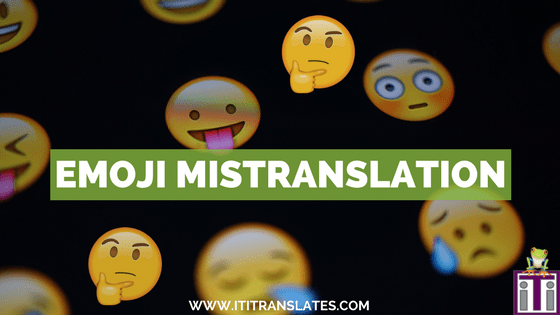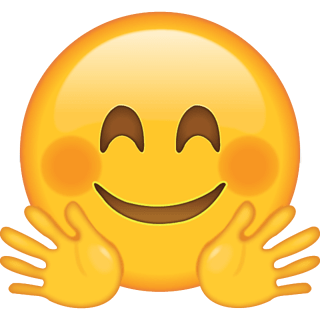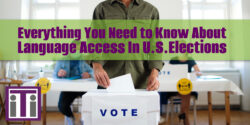If you’re a frequent reader of this blog you remember that last year we did a three-part series of emojis (see the links below). This year, in the rapidly evolving world of translation, we need an update.

Do you think of emojis as a language? They are symbols used to communicate just like the letters and words in our languages. And expressing ourselves with emojis is rising both in prominence and in stories about mistranslation.
The Great Language Equalizer
Emojis were supposed to be the great equalizer: a language all its own capable of transcending borders and cultural differences. But in an April 2016 news report for National Public Radio Eyder Peralta found evidence that disputes that.
Eyder’s report says that researchers found that different people had vastly different interpretations of some popular emojis. The researchers published their findings for GroupLens, a research lab based out of the Department of Computer Science and Engineering at the University of Minnesota, Twin Cities.
A High Risk of Miscommunication
“I think some people thought that they could use [emojis] with little risk and what we found is that it actually is at high risk of miscommunication,” Hannah Miller, a Ph.D. student at the University of Minnesota and one of the authors of the study. For example, the researchers found that when people receive the “face with tears of joy” emoji some interpret it positively, while others will interpret it negatively.

Translation Services Are Responding
Translation companies are aware of the issues surrounding emojis and are responding. We published a three part series on emojis last year as one way to help educate people and further the business understanding and proper usage of emojis. Other translation service companies have since announced that they had hired the first emoji translator. The emoji expert, Keith Broni, an Irishman and recent graduate of the University College London with an MSc in Business Psychology says, “There is no doubt that emojis are powerful communicative tools, enabling emotional expression and understanding particularly where there might be traditional language barriers. However, we know that not every culture interprets the same emoji in the same way. By helping companies and organizations understand those differences, I plan to make a real difference in the world of global communication.”
Approved Emojis Grow from 700 to 2,600
On July 24, 2017 National Public Radio interviewed emoji expert Jeremy Burge. Burge is chief emoji officer and founder of Emojipedia. The interview came shortly after Apple previewed some new emoji designs, including a T. rex and a zombie. There are also more specific symbols like a woman wearing a hijab and a woman breastfeeding a baby. These new additions bring the approved emoji lexicon to more than 2,600. Two years ago there were around 700 approved emojis.
Where New Emojis Come From
New emojis go through an approval process by the Unicode Consortium. On its website the Unicode Consortium describes its purpose as enabling people around the world to use computers in any language. The consortium provides free specifications and data that form the foundation for software internationalization in all major operating systems, search engines, applications, and the World Wide Web. Members of the consortium include tech companies like Adobe, Apple, Facebook, Google, IBM, and Microsoft. Members have to agree on new emojis. Once they agree on the list, you and I receive them on our phones later.
Emojis As Punctuation
Burge says one useful aspect of emojis is that they act as a type of punctuation. He thinks people who text are tempted to overuse punctuation. They’ll use exclamation marks to make it clear they’re being friendly. For him emojis can help clarify whether you’re trying to be friendly, funny, or sincere.
Burge agrees that emojis can be mistranslated. He uses the hugging face emoji as an example.

This emoji looks like a little smiling face with two hands held out to the side. You can see them as palms. It was designed to represent a hug but people interpret the hands more as signs of excitement. Burge says the hugging face doesn’t convey a hug very well. He says if people perceive it to mean the sender is excited and happy to see you, then that’s okay as long as both parties understand that. But how do we assure people correctly interpret or translate emojis?
No Way To Eliminate Approved Emojis
According to Burge, once an emoji is approved and in use there’s no way to remove it from use. Another factor in the importance of correctly understanding emojis is the increasing volume of them. We reported in part of two of our 2016 emoji series that more than 6 billion emojis were sent every day in 2015. More emojis means more opportunity for mistranslation.
Right now there’s no easy way to find one emoji among the 2,600. Some experts are working on ways to categorize them. The Hannah Millers, Jeremy Burges, and Keith Bronis of the world want to find better ways for us to use emojis without as much risk of mistranslation.
Other posts you might be interested in include:
The Emoji Revolution: From Emoticon to Emoji (Part 1 of 3)
The Emoji Revolution: Rise of Emoji Marketing (Part 2 of 3)
The Emoji Revolution: Emoji Translation (Part 3 of 3)
Important Questions to Ask Your Translation Services Provider






Comments are closed here.